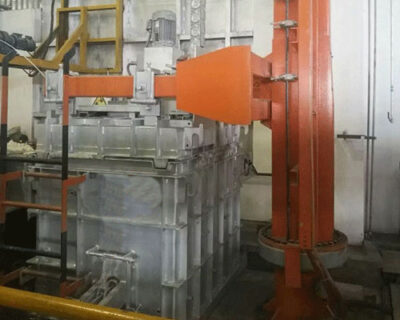Only by mastering the main influencing factors of the aluminum liquid, can we better degas by degassing system. The Influencing Factors of Hydrogen Dissolution in Aluminum Liquid mainly include Hydrogen Partial Pressure, Temperature, Alloy Element, and Other Factors.
Influencing Factors of Hydrogen Dissolution
Hydrogen Partial Pressure
At a certain temperature, the solubility of hydrogen increases with increasing partial pressure. According to research, in the furnace gas containing water vapor, even if its content is very small, it is enough to increase the hydrogen content in aluminum. Water vapor easily reacts with aluminum. The result is not only to oxidize the aluminum slag, but more importantly, to increase the hydrogen content in the aluminum liquid. For example, the gas content of the 2A11 alloy melt has different air humidity. Under the same smelting conditions, the hydrogen content changed significantly. The average humidity in January was 30%, and the gas content was 0.11cm³ /100g, the average humidity in June is 40%, and the gas content is 0.14cm/100g. It can be seen that the gas in the metal melt is largely derived from the water vapor in the furnace gas, the moisture on the charge.
Temperature
The higher the temperature of the aluminum liquid, the faster the thermal movement of the metal and gas molecules, and the diffusion rate of the gas inside the metal also increases. Therefore, in general, the solubility of gases in metals increases with increasing temperature. The solubility of hydrogen in aluminum also increases with increasing temperature. Therefore, in the smelting process, on the premise of satisfying the refining effect and casting temperature, It should be taken to prevent the melt from overheating and long-term heat preservation at high temperatures.

Alloy Element
In the actual multi-component aluminum alloy melt, the solubility of gas is not only limited by temperature and gas partial pressure, but also related to the affinity of metal and gas. Alloy elements that have a greater affinity for gas generally increase the solubility of the gas in the alloy. Alloy elements that have a lower affinity for gas are the opposite. Some tests have shown that Cu, Sn, Mn, Zn can reduce the solubility of hydrogen in aluminum alloys, while Ti, Ce, Th, Zr are the opposite.
Other Factors
Because there is an oxide film on the surface of the metal melt and it is dense, it prevents the gas from diffusing into the metal and slows down the dissolution rate. Therefore, any operation that destroys the oxide film on the surface of the melt during the smelting and rolling process is unfavorable. In addition, long-term exposure of the melt at high temperatures will increase the chance of inhalation. Therefore, we must strive to shorten the melting time as much as possible.
Degassing System
Place AdTech molten aluminum degassing system between the holding furnace and the casting machine. Blow the Nitrogen into the molten aluminum alloy, and the gas is shredded by the rotating graphite rotor in the degassing unit. Then a large number of dispersed bubbles are formed, so that the liquid aluminum alloy is in full contact with nitrogen in the treatment tank. According to the air pressure difference and the principle of surface adsorption, bubbles absorb hydrogen and oxidized slag. And then the bubbles rise to the surface of the melt to form scum. Then molten aluminum alloy flows from the outlet of the degassing unit to the casting machine. The liquid aluminum alloy continuously enters the degassing device, and nitrogen is continuously blown in. With such a purification process, the degassing machine can achieve the purpose of purifying the aluminum alloy.

